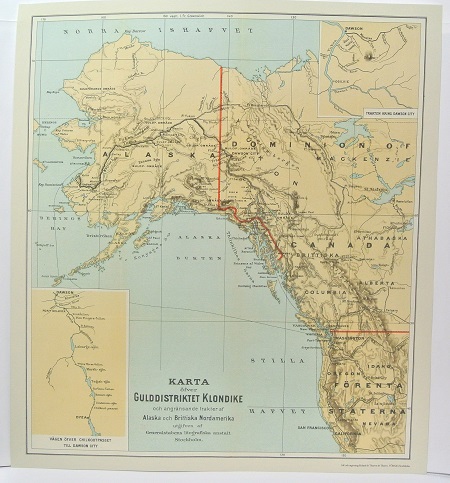Ca. 1815.
Engelsk kopparstickare. Inga övriga upplysningar hittade, om han inte är identisk med den J. Cross som nämns av Thieme-Becker. Från dennes hand kom särskilt heraldiska exlibris och porträtt (ca. 1820-60).
Född 1773 10/10 i Kumla sn (Västm.), död 1857 10/9 i Stockholm (Klara).
Kopparstickare. Son av nämndemannen Anders Christoffersson och Anna Samuelsdotter Kumlin. Inskrevs i Konstakademiens principskola i mars 1793, kallade sig då Samuel Kumblijn. Gravör vid Vetenskapsakademien 1805-29 och därefter stilgjutare i Rikets ständers bank. Graverade 1810-20 i samarbete med sonen Carl Christoffer en ny upplaga av D. K. Ehrenstrahls Certamen Equestre, se G. C. Eimmart.
Bland arbeten.
S. G. HERMELIN, Special kartor och ritningar till beskrifning öfver Sverige, Sthlm 1806: 2 kartor.
Karta öfver Elfsborgs höfdingdöme 1808.
Generalkarta över Göta kanal föreslagen till sammanbindande av Vänern och Vättern med Östersjön 1810.
N. G. WERMING, Kartor öfver svenska städer, u. o. [1806-19]: 4 blad, bl. a. Plan och läge af Oscars stad uti Wärmeland, 1811, och Special [karta] med belägenheten af Piteå, 1814.
D. K. Ehrenstrahls Certamen Equestre.
Hultmark, 1944.
1600-73 - ARNOLD COLOM (son) c. 1624-68
Jacob Colom was a printer, bookseller, chart and globe maker who set out to challenge the virtual monopoly held by W. J. Blaeu, then the only chart maker in Amsterdam. His Pilot Guide De Vyerighe Colom published in various formats and languages (with exotic tides) to meet the demands of the time was highly successful and forced Blaeu to revise and enlarge his existing chart books. In spite of Blaeu's efforts, Colom's Guide remained popular with seamen for many years and although the charts were issued in great quantity, they are now extremely rare.
Gulddistriktet Klondike - ca 1897.
Skytte af Duderhof - C. H. Tersmeden ca 1900.
Biografiska uppgifter:Kâtip Çelebi, Mustafa bin Abdullah, Haji Khalifa or Kalfa, (1609, Istanbul – 1657 Istanbul)
Kâtip Celebi was an Ottoman scholar. A historian and geographer, he is regarded as one of the most productive authors of non-religious scientific literature in the 17th century Ottoman Empire. Among his best-known works is the Kashf al-?un?n ‘an as?m? al-kutub wa-al-fun?n, ('The Removal of Doubt from the Names of Books and the Arts'), a bibliographic encyclopaedia, written in Arabic, which lists more than 14,500 books in alphabetic order.
Life and works
The son of a soldier, he himself was a soldier for ten years until a heritage made him turn to a more contemplative life. As the accountant of the commissariat department of the Ottoman Army in Anatolia, he accompanied the Ottoman army in the campaign against Baghdad in 1625, was present at the siege of Erzurum, and returned to Istanbul in 1628. In the following year he was again in Baghdad and Hamadan, and in 1633-34 at Aleppo, whence he made the pilgrimage to Mecca (hence his title Hajji). The following year he was in Erivan and then returned to Constantinople. Here he obtained a post in the head office of the commissariat department, which afforded him time for study. He seems to have attended the lectures of great teachers up to the time of his death, and made a practice of visiting bookshops and noting the titles and contents of all books he found there.
One of his shorter and more accessible works is M?z?n al-?aqq f? ikhtiy?r al-a?aqq ('The balance of truth in the choice of the truest'), a collection of short essays on topics in Islamic law, ethics, and theology, in which he takes a relatively liberal and tolerant view—often critical of narrow-minded Islamic religious authorities. This book serves as a source on Ottoman social developments in the 16th and 17th centuries, such as the introduction of coffee and tobacco. While he did not concur with the outlawing of coffee and tobacco, he found tobacco smoke personally distasteful, writing of the 'noxious effects of the corruption of the aerial essence.' An English translation by G. L. Lewis of the M?z?n al-?aqq has been published with annotations under the title The Balance of Truth.
Katip Çelebi died suddenly and peacefully in October 1657, while drinking a cup of coffee.
Bland arbeten:
Cihannüma (The mirror of the world) Constantinople, Ibrahim Müteferrika, 1732. First edition.
This is the second work by Kâtip Celebi published in 1729. The author was a well known writer on history and geography and a bibliophile and in this work intended to publish a universal system of geography. In fact only part of the work (including the description of Asia Minor) was completed by Kâtip who used European and Arabic and Persian sources, and the whole was supplemented and edited by Ibrahim, who dedicated it to the grand vizir of Sultan Mahmud II, Ali Pasha.
The picture is showing the map of the Indian Ocean and the China Sea that was engraved in 1728 by the Hungarian-born Ottoman cartographer and publisher Ibrahim Müteferrika; it is one of a series that illustrated Katip Çelebi’s Cihannuma (Universal Geography), the first printed book of maps and drawings to appear in the Islamic world.
- Se bild.




